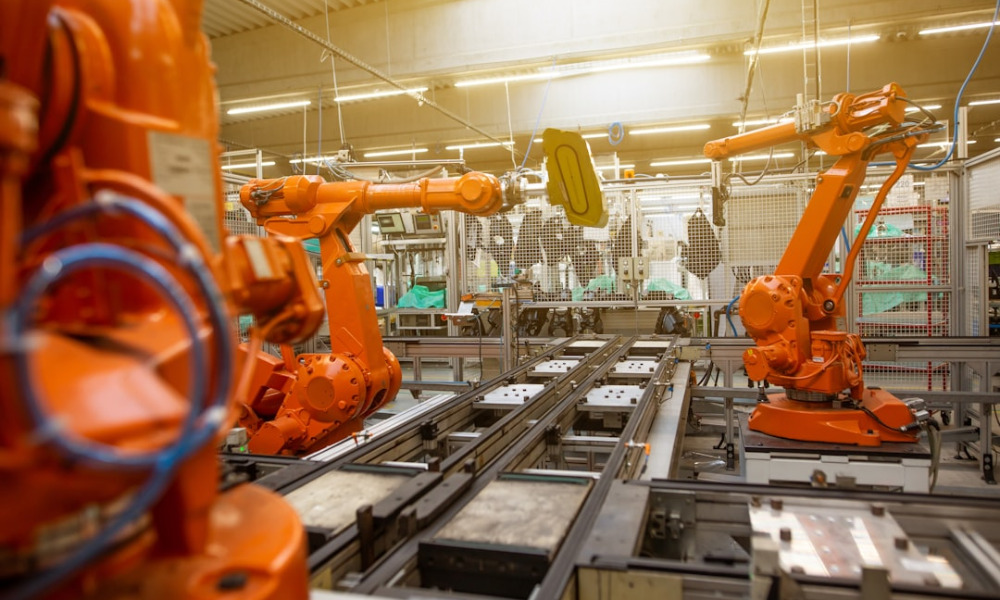
The Impact of Trump Tariffs on U.S. Manufacturing Investment
The debate surrounding protectionist trade policies has gained renewed attention with Donald Trump’s proposed economic strategies, which include increasing tariffs on imported goods. These tariffs, intended to protect U.S. industries from foreign competition, might instead harm American manufacturing firms by discouraging critical investments. According to research from the Frankfurt School of Finance & Management, tariffs on imported materials can raise costs for U.S. manufacturers, reducing their ability to invest in growth and development.
As protectionist measures feature prominently in Trump’s agenda, understanding their broader impact on manufacturing is essential for industry stakeholders. This article delves into the latest research findings and explores the potential consequences of tariff increases for the U.S. manufacturing sector.
How Trump’s Tariffs Affect U.S. Manufacturing
Since his first presidency, Donald Trump has championed tariffs as a means to protect American industries from international competition, particularly from countries like China. The tariffs he imposed targeted a wide range of imports, from steel and aluminium to consumer goods, aiming to encourage domestic production by making foreign goods more expensive.
Yet, the reality of these tariffs is complex. Many U.S. manufacturing firms rely on imported materials—particularly raw materials and intermediate goods such as steel and aluminium—as essential components of their production processes. When tariffs increase, so do the costs for these firms, as they must pay more for the materials needed to produce their goods.
Key Findings: Tariffs and Investment Reduction
The research from Frankfurt School, led by Associate Professor Thorsten Martin, examined the relationship between tariff changes and manufacturing investment in the United States. The findings suggest that tariffs on imported production inputs can deter U.S. manufacturers from investing. Here are some of the study’s key points:
- Tariff Reduction Boosts Investment: A 10% reduction in tariffs on imported materials led to a 4-6% increase in investment by manufacturing firms. This shows a direct link between lower input costs and an increase in investment levels across sectors.
- Tariff Increases as a Barrier to Growth: Conversely, the researchers found that higher tariffs discourage investment, especially in industries that rely heavily on imported raw materials.
- Impact on Essential Inputs: Tariffs on widely used materials like steel and aluminium disproportionately impact sectors that depend on these inputs, leading to a ripple effect that stifles investment and innovation.
The study reveals that tariffs not only raise input costs but also erode the profitability and competitiveness of downstream manufacturers, ultimately reducing their capacity to reinvest in their businesses.
The Role of Upstream and Downstream Effects
In economic terms, “upstream” industries are those that supply raw materials or components, while “downstream” industries use these inputs to produce finished goods. The research by Professors Martin and Clemens Otto from Singapore Management University found that tariffs on upstream goods can significantly impact investment downstream. When input costs rise, downstream manufacturers experience reduced profitability, limiting their ability to invest in expansion, technology, and workforce development.
Case in Point: Steel and Aluminium Tariffs
During Trump’s presidency, significant tariffs were imposed on steel and aluminium imports. These metals are foundational for many industries, from automotive manufacturing to construction. The researchers found that higher tariffs on these materials increased costs across various manufacturing sectors, creating what Professor Martin calls a “domino effect.” As downstream industries faced higher input prices, their operational costs rose, reducing their capacity to invest in growth and, in some cases, prompting layoffs to balance costs.
“Protectionist trade policies, such as tariffs, are often seen as safeguards for local industries. However, they can backfire by raising input costs, which are essential for production,” says Professor Martin. “In many cases, these increased costs outweigh the benefits of shielding domestic industries from foreign competition.”
Economic Consequences of Tariffs: Lower Productivity and Profitability
One of the study’s key findings is that tariffs on production inputs like raw materials can negatively impact several aspects of the manufacturing sector, including productivity, output, and employment. The research highlighted that:
- Reduced Competitiveness: Higher input costs make U.S. products less competitive in both domestic and international markets, as manufacturers face reduced profit margins and less flexibility to price competitively.
- Decreased Investment: When firms face higher input costs, they are less inclined to invest in technology, research, and expansion. Instead, they may be forced to cut costs by downsizing or reducing capital expenditure.
- Lower Productivity and Employment: The ripple effect of increased input costs impacts productivity, as firms with reduced resources may limit workforce development, cut jobs, or delay technology upgrades.
The research underscores that tariffs often fail to achieve their intended goal of protecting U.S. jobs. Instead, by increasing input costs, they reduce the profitability and investment capacity of American manufacturers, ultimately resulting in fewer jobs and lower productivity.
The Broader Impact of Trade Policies on Manufacturing
Trump’s proposed tariffs have brought protectionist policies back into the spotlight. While these measures are intended to protect U.S. jobs, the study’s findings suggest that they may hinder U.S. manufacturing investment by increasing costs for industries that depend on imported materials. This effect, in turn, threatens broader economic health by reducing output and competitiveness.
Learning from Historical Tariff Data
The research team analysed historical data on U.S. import tariffs, focusing on significant changes linked to trade agreements and policy shifts. By examining manufacturing investment patterns around these events, they were able to observe clear trends:
- Tariff Reductions Lead to Investment Growth: The researchers found that reductions in tariffs correlated with a measurable uptick in investment across the manufacturing sector. This indicates that when input costs decrease, companies are more likely to reinvest in production, innovation, and workforce expansion.
- Higher Tariffs Stifle Growth: The opposite was also true; increases in tariffs discouraged investment and reduced overall productivity within the sector.
These historical patterns serve as a warning about the potential consequences of protectionist policies. According to the researchers, the impact of tariffs is particularly pronounced for industries that rely on global supply chains, where components and raw materials are sourced from different parts of the world. When these tariffs are applied, they disrupt the natural flow of materials and raise costs, forcing companies to scale back their investment plans.
A Look Ahead: Potential Policy Implications
The findings from this study provide valuable insights for policymakers and business leaders alike. As discussions around trade policies and protectionism continue, it’s crucial to consider the potential drawbacks of tariffs, especially in an interconnected global economy.
Alternative Approaches to Strengthen Manufacturing
While tariffs are often seen as a means to protect domestic industries, there are other approaches to strengthening U.S. manufacturing without increasing costs for businesses. Potential alternatives include:
- Tax Incentives for Domestic Investment: By providing tax breaks or incentives for companies that invest in local production and innovation, policymakers can encourage growth without relying on tariffs.
- Encouraging Research and Development: Government funding for R&D in sectors like advanced manufacturing can help U.S. firms remain competitive and lead in technological advancements.
- Trade Agreements That Reduce Input Costs: Agreements that lower tariffs on raw materials and inputs can create a more favourable environment for U.S. manufacturers, promoting investment and improving competitiveness.
Conclusion: Balancing Protectionism and Investment
The study from Frankfurt School of Finance & Management highlights a critical consideration in the debate over tariffs and protectionism. While these policies are intended to protect American industries, they can have unintended consequences that limit growth, stifle investment, and reduce competitiveness. For U.S. manufacturing to thrive, it is essential to strike a balance between protecting domestic jobs and enabling companies to access affordable materials.
As the U.S. looks to the future, policymakers must weigh the benefits and drawbacks of protectionist policies carefully. Encouraging investment, reducing input costs, and supporting innovation will be crucial for the long-term success of U.S. manufacturing.


